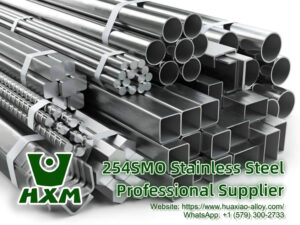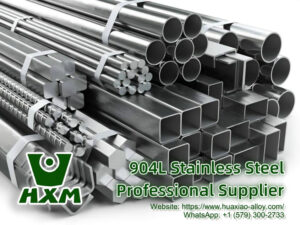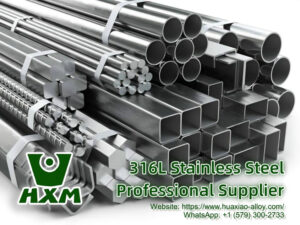Stainless Steel Strip
Austenitic Stainless Steel: 301, 302, 304, 304L, 309S, 310S, 316, 316L, 316Ti, 317L, 321, 347, 904L
Ferritic Stainless Steel: 405, 409, 410, 410S, 420, 430, 434, 436, 439, 441, 444
Martensitic Stainless Steel: 410, 416, 420, 431, 440A, 440C
Duplex Stainless Steel: 2205, 2304, 2507, S31803, S32750, S32760
Precipitation Hardening Stainless Steel: 17-4PH, 15-5PH, 17-7PH
Implementation Standards: ASTM A240, ASTM A480, ASTM A666, ASTM A693, ASTM A167, ASME SA240, ASME SA480, ASME SA693
Certification: ISO 9001:2015, EN 10204 3.1/3.2
Features:
- Excellent Corrosion Resistance: Provides outstanding resistance to oxidation, pitting, crevice corrosion, and stress corrosion cracking.
- High Strength & Durability: Maintains mechanical strength under extreme temperatures and pressures.
- Versatile Surface Finishes: Available in BA, 2B, No.4, HL, mirror finish, and customized textures.
- Good Formability & Weldability: Suitable for deep drawing, stamping, and precision machining applications.
Applications:
Widely used in automotive, aerospace, chemical processing, marine, medical, food processing, electronics, construction, and energy industries.
MOQ: 500 KG
Payment Methods: T/T, L/C
Price: Negotiable
Stainless Steel Strip Supplier
Stainless Steel Strips, Stainless Steel Coils, ASTM A240 Stainless Steel Strips, ASME SA240 Stainless Steel Coils, Stainless Steel Precision Strips, Stainless Steel Slitting Coils Supplier in China.
Stainless Steel Cold Rolled Strips, ASTM A666 Stainless Steel Precision Strips, JIS G4305 Stainless Steel Coils, EN 10088-2 Stainless Steel Strips Exporter, Stainless Steel Slitting Coils Dealer Worldwide.
Huaxiao Alloy, a leading supplier and exporter in China, specializes in providing a comprehensive range of stainless steel strips and coils to customers globally. Our high-quality stainless steel products are manufactured with precision to ensure excellent mechanical properties, surface quality, and corrosion resistance, making them suitable for various industrial applications. Produced in state-of-the-art facilities, our stainless steel strips comply with the highest international standards, including ASTM, ASME, JIS, EN, and ISO.
We offer stainless steel strips and coils in a wide range of grades, including 201, 301, 304, 304L, 316, 316L, 321, 430, 409, 2205, 2507, and more, available in various thicknesses, widths, and surface finishes. We also provide customized processing services to meet specific client requirements.
Specifications for Stainless Steel Strip
| Category | Thickness Range | Width Range | Length Range | Standard Specifications |
|---|---|---|---|---|
| Stainless Steel Strips | 0.05 mm – 6 mm | 10 mm – 1250 mm | Coil Lengths (as required) | ASTM A240, ASTM A666, JIS G4305, EN 10088-2 |
| Stainless Steel Coils | 0.1 mm – 6 mm | 100 mm – 1500 mm | Coil Lengths (as required) | ASTM A240, ASTM A480, ASME SA240 |
| Stainless Steel Foils | 0.02 mm – 0.5 mm | 5 mm – 600 mm | Coil Lengths (as required) | ASTM A240, JIS G4313, DIN 17441 |
- Standards: ASTM A240, ASTM A480, ASTM A666, JIS G4305, EN 10088-2, DIN 17441
- Grades Available: 201, 202, 301, 302, 304, 304L, 309, 310, 316, 316L, 316Ti, 317L, 321, 347, 409, 410, 420, 430, 436, 439, 441, 444, 904L, Duplex 2205, Super Duplex 2507
- Sizes:
- Width: 10 mm, 50 mm, 100 mm, 1220 mm, 1250 mm, 1500 mm
- Length: Coil or per customer requirements
- Thickness Range: 0.02 mm to 6 mm
- Forms: Strips, Coils, Foils, Sheets, Shim Sheets, Circles, Rolls
- Surface Finishes: 2B, BA, No.4, Mirror, HL (Hairline), Satin, CR (Cold Rolled), HR (Hot Rolled)
- Hardness Levels: Soft, Half Hard, Quarter Hard, Full Hard, Spring Hard
Available Stainless Steel Grades
Austenitic Stainless Steels:
- 201 (UNS S20100 / W.Nr. 1.4372): Good corrosion resistance, high strength, and cost-effective alternative to 304.
- 202 (UNS S20200): Improved toughness and strength with moderate corrosion resistance.
- 301 (UNS S30100 / W.Nr. 1.4310): High strength, excellent work hardening properties, and good corrosion resistance.
- 302 (UNS S30200 / W.Nr. 1.4319): Similar to 304 but with higher carbon content for improved strength.
- 304 (UNS S30400 / W.Nr. 1.4301): Most widely used stainless steel with excellent corrosion resistance.
- 304L (UNS S30403 / W.Nr. 1.4307): Low carbon version of 304 for better weldability.
- 309 (UNS S30900 / W.Nr. 1.4828): High-temperature oxidation resistance.
- 310 (UNS S31000 / W.Nr. 1.4845): Excellent high-temperature strength and oxidation resistance.
- 316 (UNS S31600 / W.Nr. 1.4401): Superior corrosion resistance, especially against chlorides.
- 316L (UNS S31603 / W.Nr. 1.4404): Low carbon version of 316 for improved weldability.
- 316Ti (UNS S31635 / W.Nr. 1.4571): Titanium-stabilized 316 for better high-temperature strength.
- 317L (UNS S31703 / W.Nr. 1.4438): Higher molybdenum content for enhanced corrosion resistance.
- 321 (UNS S32100 / W.Nr. 1.4541): Titanium-stabilized 304 for improved high-temperature performance.
- 347 (UNS S34700 / W.Nr. 1.4550): Niobium-stabilized 304 for enhanced high-temperature corrosion resistance.
Ferritic Stainless Steels:
- 409 (UNS S40900 / W.Nr. 1.4512): Good oxidation resistance and weldability, commonly used in automotive exhaust systems.
- 410 (UNS S41000 / W.Nr. 1.4006): Basic martensitic grade with moderate corrosion resistance and good hardness.
- 420 (UNS S42000 / W.Nr. 1.4021): High hardness and wear resistance, used in cutlery and surgical instruments.
- 430 (UNS S43000 / W.Nr. 1.4016): Good corrosion resistance and formability, widely used in decorative applications.
- 436 (UNS S43600 / W.Nr. 1.4513): Improved corrosion resistance and better formability than 430.
- 439 (UNS S43932 / W.Nr. 1.4510): Excellent resistance to stress corrosion cracking and good weldability.
- 441 (UNS S44100 / W.Nr. 1.4509): Titanium and niobium stabilized for improved high-temperature performance.
- 444 (UNS S44400 / W.Nr. 1.4521): Superior chloride resistance compared to 316.
Duplex and Super Duplex Stainless Steels:
- 2205 (UNS S32205 / W.Nr. 1.4462): High strength and excellent corrosion resistance in aggressive environments.
- 2507 (UNS S32750 / W.Nr. 1.4410): Super duplex grade with outstanding corrosion resistance and mechanical properties.
High-Performance Stainless Steels:
- 904L (UNS N08904 / W.Nr. 1.4539): Superior corrosion resistance, especially in strong acids.
- Nitronic 50 (UNS S20910): High strength and corrosion resistance with excellent wear properties.
- Nitronic 60 (UNS S21800): Excellent wear and galling resistance.
Key Features of Stainless Steel Alloy
1. Corrosion Resistance
Stainless steel alloys contain chromium (typically at least 10.5%), forming a passive oxide layer that provides excellent resistance to rust, oxidation, and chemical corrosion in various environments.
2. High Strength and Durability
Stainless steel exhibits outstanding mechanical strength, toughness, and resistance to wear, making it suitable for demanding applications such as construction, automotive, and aerospace industries.
3. Excellent Heat and Temperature Resistance
Certain stainless steel grades, such as 310 and 316Ti, can withstand high temperatures and oxidation, making them ideal for heat exchangers, furnace components, and exhaust systems.
4. Good Weldability and Fabrication
Stainless steel is highly workable and can be easily welded, machined, and formed into various shapes, making it versatile for manufacturing and engineering applications.
5. Hygienic and Easy to Clean
Its non-porous surface resists bacterial growth, making stainless steel an excellent choice for food processing, medical equipment, and pharmaceutical applications.
6. Aesthetic Appeal
Stainless steel has a sleek, modern appearance with a range of surface finishes, including polished, brushed, and mirror, making it popular for architectural and decorative applications.
7. Excellent Cryogenic Toughness
Many stainless steels retain their mechanical properties at extremely low temperatures, making them suitable for applications such as LNG storage and cryogenic vessels.
8. Magnetic and Non-Magnetic Properties
Depending on the alloy composition, stainless steel can be either magnetic (ferritic and martensitic) or non-magnetic (austenitic), providing flexibility for different industrial requirements.
9. Environmentally Friendly and Recyclable
Stainless steel is 100% recyclable, contributing to sustainability and reducing environmental impact in industrial production and construction.
Applications of Stainless Steel Strip
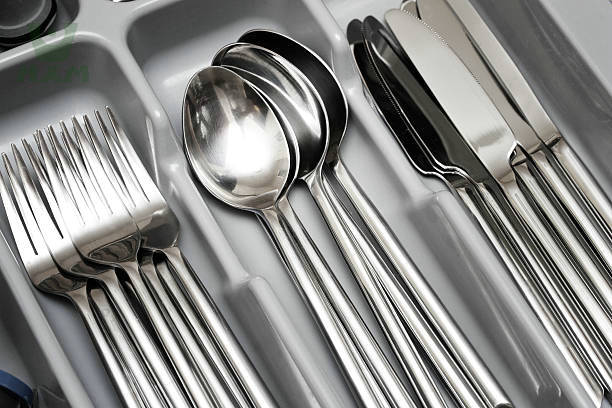
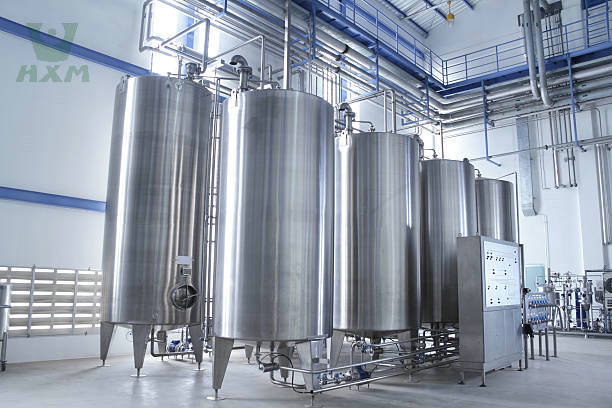
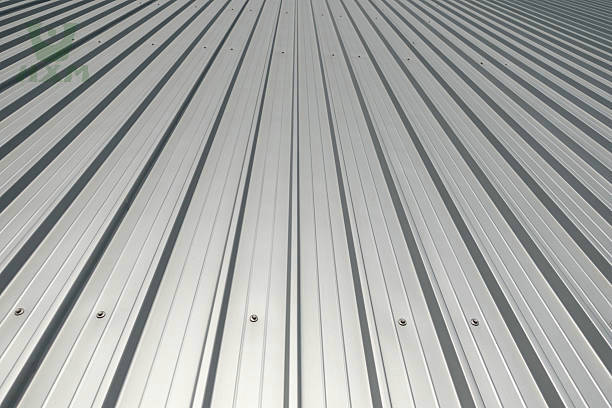
Automotive Industry
- Used in exhaust systems, gaskets, clamps, and decorative trim due to its high-temperature resistance and corrosion resistance.
- Essential for manufacturing fuel tanks, heat shields, and catalytic converter components.
2. Aerospace and Aviation
- Utilized in aircraft structural components, heat exchangers, and jet engine parts.
- High-strength, lightweight, and oxidation-resistant properties make it ideal for extreme environments.
3. Electronics and Electrical Industry
- Used in battery connectors, shielding components, and electronic enclosures.
- Precision stainless steel strips are essential in transformer cores and EMI shielding.
4. Construction and Architecture
- Applied in roofing, cladding, and decorative panels due to its excellent weather resistance.
- Stainless steel strips are also used in expansion joints and support structures.
5. Food Processing and Kitchenware
- Preferred for kitchen appliances, cutlery, and food-grade containers.
- Ensures hygiene, corrosion resistance, and ease of cleaning.
6. Medical and Pharmaceutical Equipment
- Used in surgical instruments, medical implants, and diagnostic equipment.
- Biocompatibility and sterilization resistance make it ideal for medical applications.
7. Chemical and Petrochemical Industry
- Used in heat exchangers, storage tanks, and pipelines for handling corrosive chemicals.
- High resistance to acids, alkalis, and extreme temperatures.
8. Springs and Fasteners
- Stainless steel strip is widely used in manufacturing precision springs, washers, and clips.
- Provides excellent fatigue resistance and mechanical strength.
9. Energy and Power Generation
- Used in solar panel frames, wind turbine components, and nuclear power plant structures.
- Offers excellent durability and environmental resistance.
10. Household and Consumer Goods
- Found in razor blades, watches, decorative elements, and flexible hoses.
- Combines strength, aesthetic appeal, and corrosion resistance.
Packaging & Delivery
Packaging Options:
- Bundles with plastic wrapping for weather protection.
- Wooden crates or pallets for safe transportation.
- Custom packaging available based on client requirements.
Delivery Time: 10-25 days or faster if stock is available.
Why Choose Huaxiao Alloy?
- Made in China: Leading supplier of Hastelloy alloys with international market expertise.
- Wide Grade Selection: Comprehensive range of grades and customizable sizes.
- Stringent Quality Control: Ensuring compliance with international standards.
- Global Export Network: Trusted by clients in Europe, the Americas, the Middle East, and Asia.
- Competitive Pricing: High-quality products at reasonable rates.
Contact us today for more details or to request a quote for Stainless steel strips!
Get Quote Now for Stainless Steel Strip
FAQs
Stainless steel strip is a thin, narrow piece of stainless steel that is widely used in various industries due to its corrosion resistance, strength, and flexibility. Common applications include:
- Automotive industry: Used in exhaust systems, trim components, and fuel tanks.
- Electronics: Found in connectors, battery cases, and precision springs.
- Medical instruments: Used in surgical tools, needles, and implants.
- Construction: Applied in cladding, roofing, and structural reinforcements.
- Household appliances: Found in kitchen utensils, cookware, and decorative trims.
The choice between 304 and 316 stainless steel depends on the application:
- 304 Stainless Steel:
- Contains 18% chromium and 8% nickel, providing excellent corrosion resistance.
- Cost-effective and widely used in kitchen equipment, architectural structures, and industrial machinery.
- Suitable for general indoor and outdoor environments, but not ideal for high-salinity or acidic conditions.
- 316 Stainless Steel:
- Contains 16% chromium, 10% nickel, and 2% molybdenum, making it more resistant to chlorides and marine environments.
- Ideal for marine applications, chemical processing, and medical implants.
- More expensive than 304 but offers superior corrosion resistance in harsh conditions.
For general use, 304 is a cost-effective choice, while 316 is better for extreme corrosion resistance (e.g., saltwater exposure).
The main differences between steel strip and steel sheet are:
- Steel Strip:
- Narrower width, typically less than 600 mm.
- Supplied in coils or cut-to-length pieces.
- Used in precision applications, automotive components, and electronics.
- Steel Sheet:
- Wider, usually more than 600 mm in width.
- Can be cut into various shapes for structural or decorative uses.
- Common in building facades, shipbuilding, and industrial equipment.
Strip steel refers to a narrow, flat-rolled steel product that is either cold-rolled or hot-rolled. It is characterized by:
- Thin thickness and continuous length (often supplied in coils).
- High precision in dimension and surface finish.
- Versatile applications, such as in springs, clamps, tubing, and electrical components.
- Stainless Steel:
- Contains chromium (≥10.5%), which provides corrosion resistance.
- Used in kitchens, medical equipment, aerospace, and marine industries.
- Sheet Steel (typically refers to carbon or mild steel):
- Does not have corrosion resistance unless coated (e.g., galvanized or painted).
- Used in automotive bodies, construction, and structural applications.
- Generally cheaper but requires protective coatings for longevity.
In sheet metal fabrication, a strip refers to a narrow, elongated piece of sheet metal that is cut from a larger sheet. It is used for:
- Stamping and forming (e.g., brackets, washers, and clips).
- Welding and reinforcement in industrial and structural applications.
- Electrical components (e.g., busbars and connectors).
The raw material for steel strip is hot-rolled or cold-rolled steel coils, made from:
- Carbon steel: For general structural and industrial applications.
- Stainless steel: For corrosion-resistant and high-strength applications.
- Alloy steel: For enhanced strength and wear resistance in demanding environments.
Stainless steel sheets are highly versatile and used in:
- Architecture & Construction: Cladding, roofing, and elevator panels.
- Automotive Industry: Body panels, exhaust systems, and trims.
- Medical Equipment: Surgical instruments and sterilization trays.
- Food Processing & Kitchenware: Countertops, sinks, and commercial kitchen equipment.
- Chemical & Marine Applications: Storage tanks, piping, and offshore structures.

